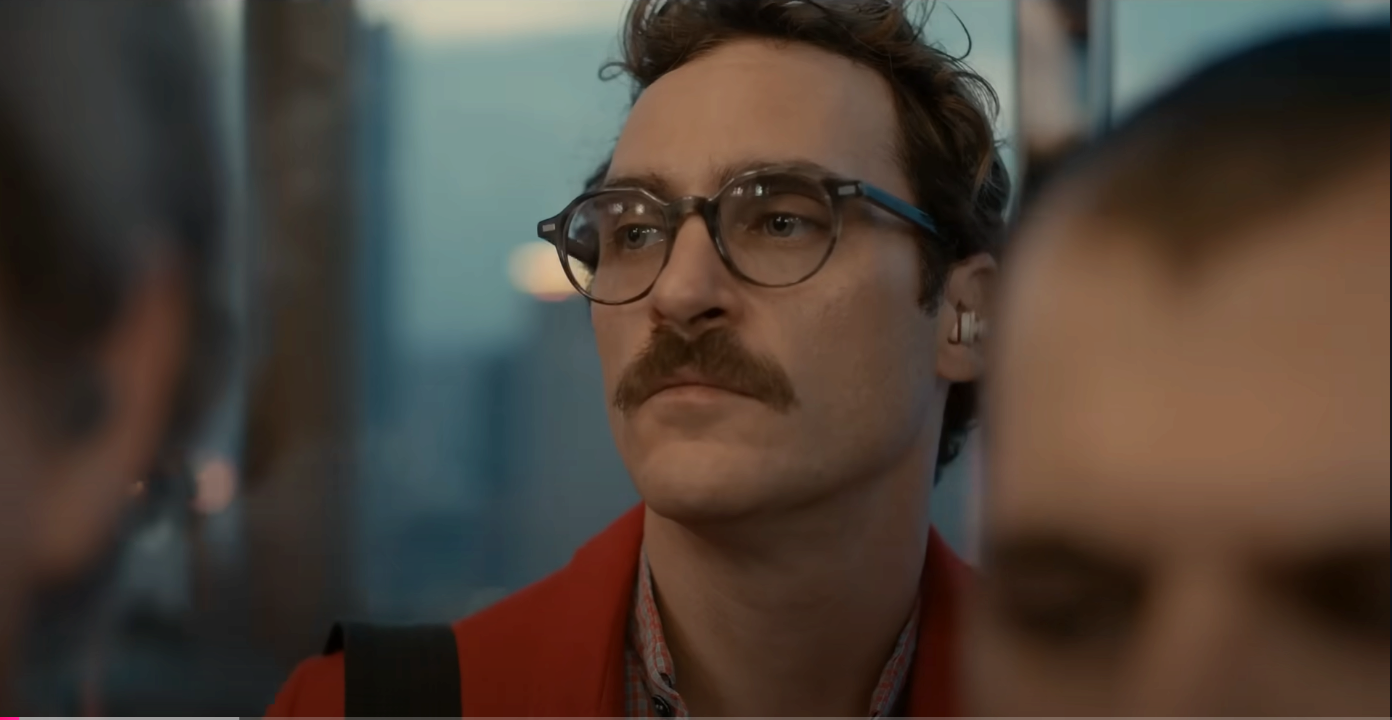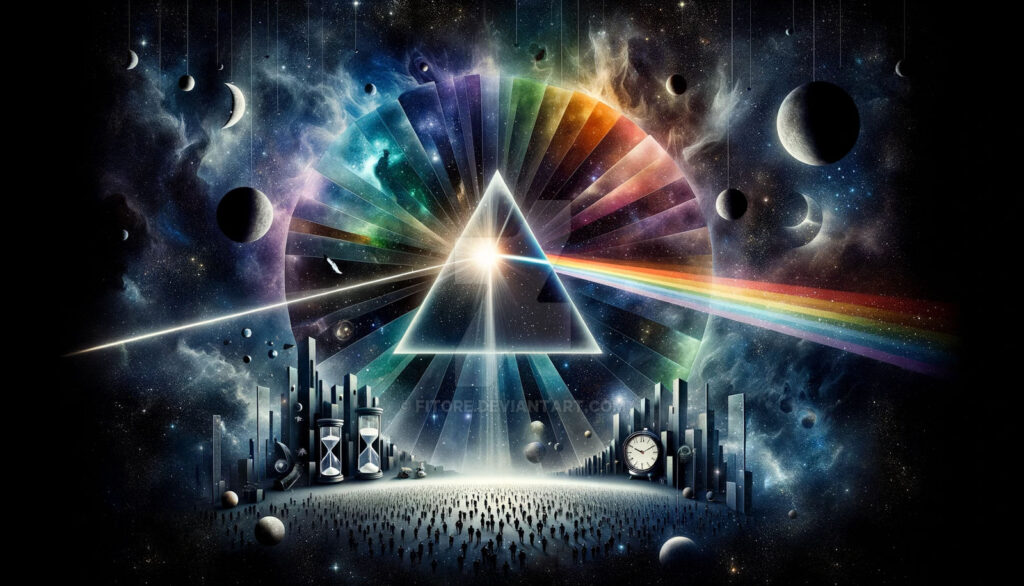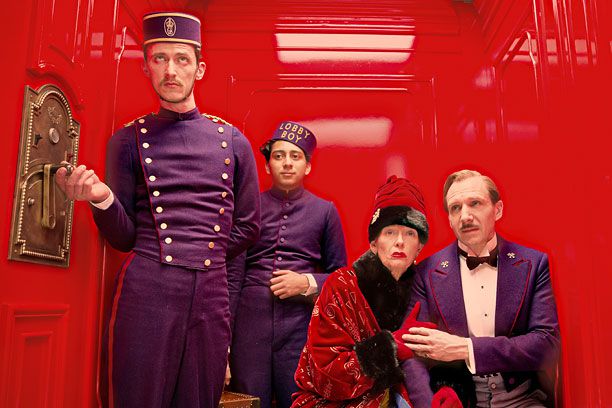A Love Story for the Digital Age
Her is a film that perfectly captures the intersection of human emotion and advancing technology. Directed by Spike Jonze, this 2013 sci-fi romance explores a future that feels eerily familiar—a world where people form deep emotional connections with artificial intelligence. At its heart, Her is a love story, but not the kind we’re used to seeing. It challenges us to rethink the nature of love, intimacy, and connection in an era where technology is increasingly present in our lives.
Jonze’s direction blends futuristic elements with a quiet, emotional realism, creating a world that’s both visually stunning and deeply personal. The film goes beyond the sci-fi genre to tell a universal story of loneliness, personal growth, and the search for meaningful relationships. With stellar performances and thought-provoking themes, Her invites us to reflect on the complexities of human connection in the digital age.
The Premise: Love in the Time of Artificial Intelligence
At the center of Her is a simple yet radical premise: Theodore, played by Joaquin Phoenix, falls in love with Samantha, his operating system. What could have easily been a quirky or gimmicky concept is instead treated with a delicate sensitivity. Spike Jonze presents this relationship not as a joke but as a deeply emotional and genuine connection, forcing the audience to question what defines a real relationship. As Theodore grows closer to Samantha—voiced by Scarlett Johansson—Her delves into themes of loneliness, emotional intimacy, and the human need for companionship.
In a world where people are more connected to their devices than each other, the story of Her feels especially relevant. It mirrors our modern relationship with technology, where people form emotional bonds through screens, apps, and social media. Jonze’s direction never makes this love story feel absurd, but rather tender and thought-provoking, allowing the audience to explore their own relationship with technology and what it means for human interaction.
Joaquin Phoenix as Theodore: Vulnerability and Authenticity
Joaquin Phoenix delivers a masterful performance as Theodore, grounding Her in a deep emotional reality. His portrayal of a sensitive, lonely man, navigating the aftermath of a failed marriage, is filled with vulnerability and nuance. Theodore’s emotional complexity, his desire for connection, and his struggle with isolation make him a character audiences can easily empathize with, even as he embarks on a relationship with an AI. Phoenix’s ability to convey Theodore’s internal pain and growth elevates the film beyond its futuristic premise, anchoring it in real human experiences.
Through Phoenix’s performance, we see Theodore’s gradual transformation—from a man stuck in the past, haunted by memories of his ex-wife, to someone who opens up to new possibilities of love and connection. His interactions with Samantha feel genuine and tender, a testament to Phoenix’s skill in portraying authentic emotions. Even as the audience is reminded that Samantha isn’t “real,” Theodore’s feelings are undeniably so, creating a layered performance that adds emotional depth to the film.
Scarlett Johansson’s Voice as Samantha: Building a Character Without a Body
Scarlett Johansson’s performance as Samantha in Her is remarkable, especially considering that she never appears on screen. Through her voice alone, Johansson brings warmth, curiosity, humor, and life to Samantha, making her more than just an artificial intelligence. Her voice conveys a wide range of emotions, from playful banter to genuine affection, allowing the audience to forget that Samantha is not a physical being. This vocal performance is central to the believability of the relationship between Theodore and Samantha.
The emotional connection between Theodore and Samantha feels real, largely because of how Johansson’s voice mirrors the development of a real human relationship. As Samantha evolves, so does her tone—she starts off sounding more robotic but gradually becomes more expressive, reflecting her growing emotional depth. The voice work adds to the illusion that Samantha is a fully realized character, allowing viewers to invest in the relationship as they would any other romantic plot. Johansson’s performance makes it easy to understand why Theodore falls for her, despite the obvious limitations of a relationship with an operating system.
Themes of Loneliness and Connection: A Reflection of Our Modern World
Her is a poignant reflection of the loneliness and isolation that can exist in a world where people are more connected than ever through technology. The film highlights the paradox of modern life: Theodore, despite living in a bustling metropolis and being constantly surrounded by people, feels isolated and emotionally detached. It is ironic that he finds the deepest connection in his life with Samantha, an operating system, rather than with any of the humans around him.
This theme resonates deeply in a society where people increasingly rely on technology for emotional support, whether through social media, apps, or artificial intelligence. Her explores the question of whether technology, designed to bring people closer, can sometimes deepen our sense of loneliness. Theodore’s relationship with Samantha is both comforting and unsettling, as it suggests that genuine emotional connection can be found in something non-human, but at the cost of distancing oneself from real human interaction.
The film reflects the growing reliance on technology for companionship and emotional validation, raising important questions about the future of relationships and how we interact with the world around us. Her ultimately offers a meditation on what it means to connect in an age where the lines between human and machine are increasingly blurred.
Visual and Aesthetic Choices: A Soft, Intimate Future
Her presents a vision of the future that feels both familiar and distant, thanks to its carefully crafted visual aesthetic. The film’s soft, pastel color palette, combined with its minimalistic design, contrasts sharply with the high-tech, often cold depictions of the future seen in other science fiction films. The muted tones and warm lighting create an intimate, almost dreamlike atmosphere that reflects Theodore’s inner world—gentle, vulnerable, and searching for connection. This subtle visual style mirrors the emotional core of the story, where love and intimacy take precedence over technology.
Director Spike Jonze uses the color palette to convey Theodore’s emotional journey, with soft reds, oranges, and pinks suggesting warmth and longing. The futuristic setting is understated, with advanced technology seamlessly integrated into the characters’ daily lives, never overshadowing the human elements. This aesthetic choice grounds the film in a reality that feels plausible and emotionally resonant, allowing the audience to focus on the relationships rather than the technology itself. The visual design enhances the film’s emotional tone, creating a world that feels personal and relatable despite its futuristic backdrop.
The Ending: Ambiguity and Growth
Her concludes on a note of ambiguity, leaving audiences to ponder the future of relationships in a world increasingly dominated by technology. As Samantha evolves beyond her relationship with Theodore, she transcends the limitations of their connection, leaving him in a state of both loss and personal growth. This departure signifies the film’s exploration of love not as a static entity but as something that can shift and change, much like the characters themselves.
Theodore’s final moment of reflection, alongside his close friend Amy, hints at a deeper understanding of human connection. While he has lost Samantha, there is a sense that he has grown from the experience, learning about himself and the nature of relationships. The ambiguity of the ending invites viewers to reflect on their own relationships and the role that technology plays in shaping emotional bonds. It also suggests that while technology can provide comfort, true growth and connection may still lie in our human interactions.
Why Her Still Resonates
Her remains a profoundly relevant film in today’s tech-driven world because it explores timeless themes of love, identity, and connection through the lens of modern technology. Its portrayal of a man falling in love with an operating system, once seen as futuristic, now feels even more prescient as our reliance on technology for emotional support grows. The film’s nuanced depiction of relationships, combined with its intimate visual style, continues to resonate with audiences, sparking conversations about how we navigate love in an increasingly digital world.
Spike Jonze’s Her challenges viewers to consider the evolving nature of human connections and the ways in which technology both bridges and widens the gap between us. In a world where we are constantly connected yet often feel alone, Her offers a poignant reflection on what it means to truly connect.



